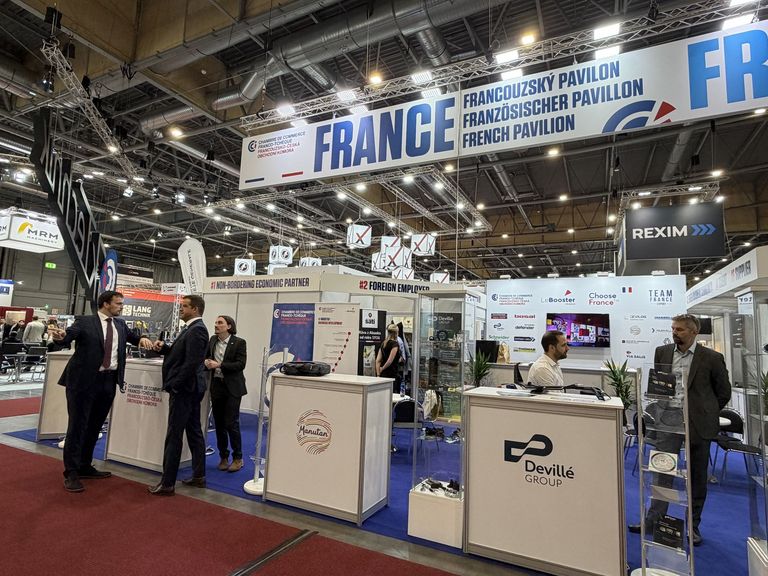Sektorové aktuality
Innovation in the Czech Republic

Innovation and creativity have long been hallmarks of the Czech Republic. After all, this is the country that invented the term “robot”, when Czech writer, Karel Čapek, coined the word back in 1921. Some 70 years later, one of the characters in the Oscar-nominated film, “The Elementary School”, by Jan and Zdeněk Svěrák, further defined Czech creativity: a handyman who manages a small electrical outlet, who is said to be able to make and repair “everything”.
This innate inventiveness is not just in stories, but has produced very real results. Soft contact lenses, for instance, were invented sixty years ago by Otto Wichterle using a device based on a Meccano-like construction kit for children called Merkur.
But we can also cite many other examples like the discovery of the four blood types part of the ABO system by Jan Janský in 1907, the Kaplan turbine used today in most power plants around the world by Viktor Kaplan in 1912 and finally, Jaroslav Heyrovský received the Nobel Prize in chemistry for his discovery and development of methods for polarographic analysis in 1959.
Even in the 19th century the Czech Republic had been noted for its industrialised, technically skilled people, and their solid grounding in the natural sciences. At present, the country has one of the highest shares of industry in GDP in Europe and the OECD area. In short, the Czech Republic is an ideal environment for launching a new industrial revolution.
Since 1989 the country has developed as an open, export-oriented economy, attracting many multinational companies, some of which have also established high value research and development (R&D) functions.
The backbone of Czech industry is in producing electrical, electronic and optical devices, as well as cars, transport vehicles and machinery. These innovative sectors are characterised not only by their high share in exports, but also by their lion’s share of private R&D funding, and as a result creative industries are growing. Also, the number of university students –is now one of the fastest growing in Europe. Within the last seven years the number of R&D staff in companies and universities has grown by 50% and R&D funding has exceeded 2% of GDP, with a growing share of that going to small and medium-sized domestic firms.
In the Czech Republic, there are 19 universities and 22,000 graduates in STEM fields in 2018. The Czech Academy of Sciences operates a network of 54 research institutes with more than 8,000 employees.
An extensive infrastructure of excellent scientific centres has been built in the Czech Republic in recent years. Centres like ELI (Extreme Light Infrastructure), CEITEC (Central European Institute of Technology) or IT4Innovations have managed to establish partnerships with foreign partners and have excellent equipment and top scientists at their disposal via their extensive networks. This has helped the Czech Republic to assert itself in fields such as information technology (IT), nanotechnology, biotechnology, nuclear and non-nuclear energy sectors, aerospace and the chemical industry. Moreover, a lot of innovative domestic companies have emerged, especially in the aviation industry and in IT, adding to the economy’s competitive potential.
Companies like JetBrains, AVAST, AVG, GoodData or Socialbakers, to name but a few, are internationally successful in the fields of software development, cyber security, data protection, analyses and processing. A large number of research centres and companies dealing with IT, biomedicine and other branches, is located in Brno–the Czech “Silicon Valley”.
The Czech Institute of Informatics, Robotics and Cybernetics (CIIRC) of the Czech Technical University in Prague is working with Airbus Industries to develop ARUM–a flexible production planning and scheduling system for aircraft assembly tasks. The first pilot application will be for the ramp-up phase of manufacturing the A350, and the new system is expected to increase the productivity of aircraft assembly by 10-15%.
Important IT projects are focused on developing new technologies for automatic transcription of audio-visual recordings of lectures and court proceedings, and automated online monitoring of streamed news. The EyeDentity project for identifying facial features even under difficult conditions holds promise for the security sector. Helpful new technology is also being developed for speech processing to improve communication between humans and computers, and to help navigation for people with a disability.
Czech teams from Charles University, Prague, together with industrial partner Lingea Brno have developed state-of-the-art systems for automatic translation which are helping to crack the language barrier still present in the EU digital market.
As far as the creativity of the Czechs is concerned, the video game market is also a perfect illustration. We have already addressed this subject in a previous article on our website. The Czech Republic is a powerhouse in the gaming industry. In 2019, the total turnover for the entire video game industry in the Czech Republic had reached an amount of approximately 4.5 billion CZK (170 million euros). The success of games like Beat Saber from Beat Games (which was acquired by Facebook), Kingdom Come: Deliverance from Warhorse Studios, Arma from Bohemia Interactive and Euro Truck Simulator from SCS Software contributed to this success by Czech Republic as abroad.
During its history, the Czech Republic has been the source of many technological breakthroughs in various fields. Such advances show that, true to its industrial tradition, the Czech Republic remains at the forefront of innovation and knows how to take advantage of the creativity of its people, while improving its competitiveness and also leading international collaborations.
Sources :
- https://czechinvest.org
- https://fr.wikipedia.org/wiki/Robot
- https://francais.radio.cz/czech-made-les-lentilles-de-contact-souples-8710932
- https://data.oecd.org/czech-republic.htm
- https://en.wikipedia.org/wiki/Central_European_Institute_of_Technology
- https://www.it4i.cz/en/about/about-it4i
- https://eli-laser.eu/the-eli-project/
- https://www.cybersecurityintelligence.com/location/czech-republic/
- https://en.wikipedia.org/wiki/Category:Software_companies_of_the_Czech_Republic
- https://www.airframer.com/news_story.html?release=19484
- https://eyedea.ai/eyedentity/
- https://www.himl.eu/what-is-himl
- https://en.wikipedia.org/wiki/Category:Video_game_companies_of_the_Czech_Republic
- https://gda.cz


![[Translate to Tchèque:] [Translate to Tchèque:]](https://aws-a.medias-ccifi.org/fileadmin/cru-1768343718/reptcheque/user_upload/csm_msvfinaldesgnborder_6_b4f8e6422e.png)